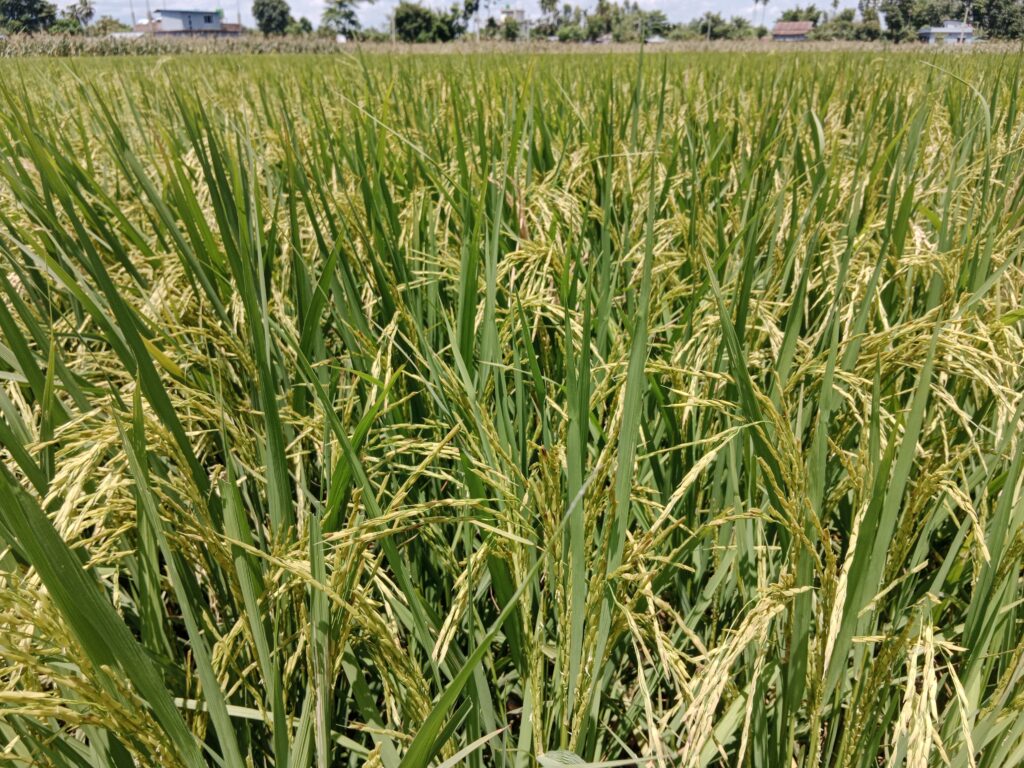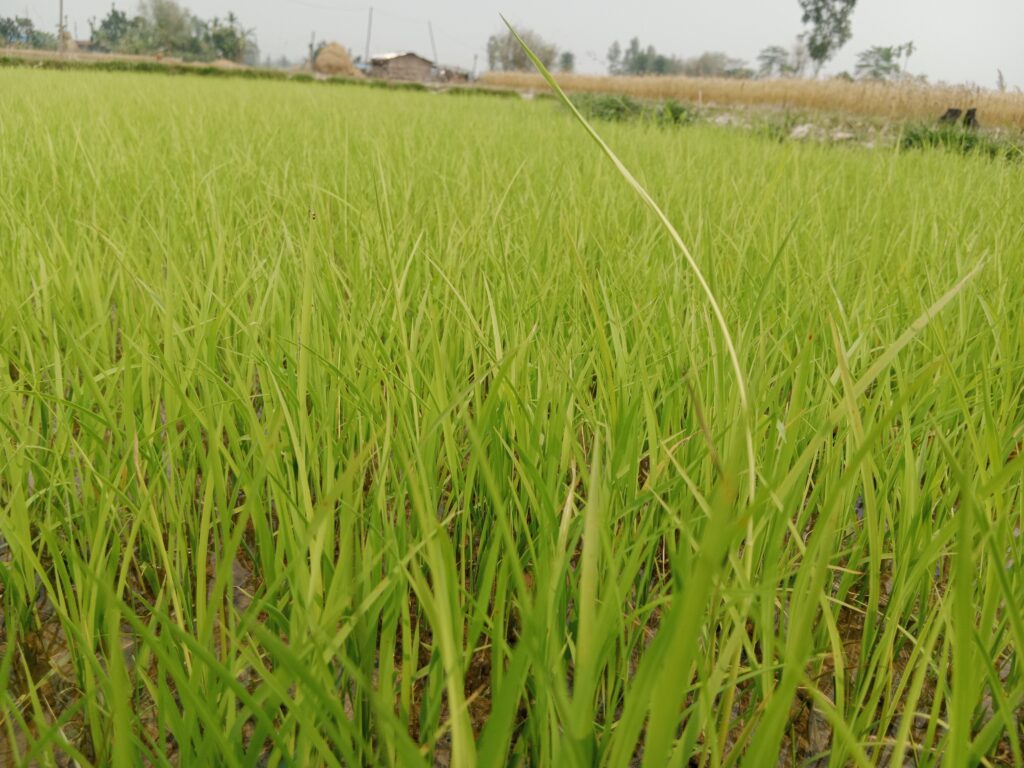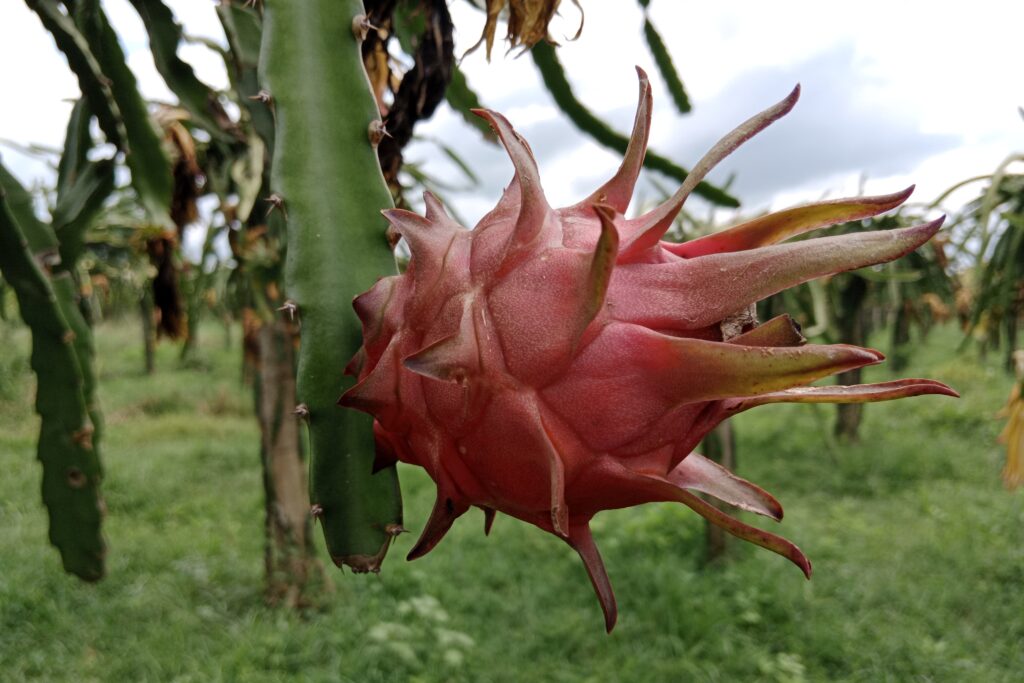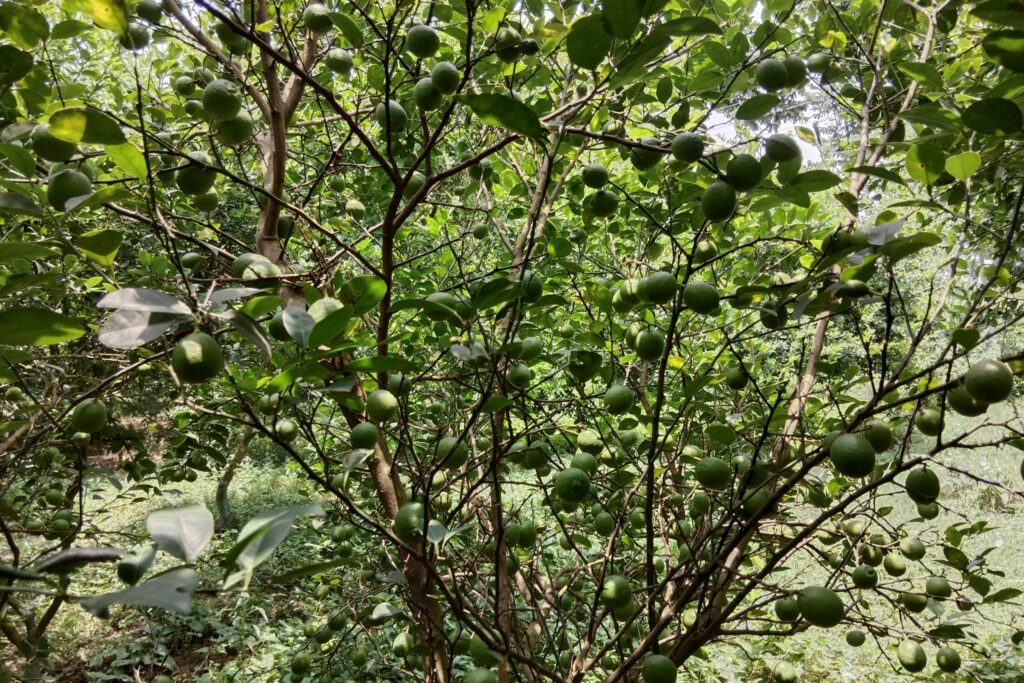In recent years, Nepalese farmers have begun reaping significant financial rewards from cultivating a special type of aromatic rice known as the Suwashi rice. Once considered a lesser-known strain, Suwashi rice is now gaining recognition for its excellent aroma, soft texture, and premium market value. With growing demand both locally and internationally, this variety is fast becoming a game-changer for rural livelihoods.
What is Suwashi Rice?
Suwashi rice, a premium aromatic cultivar predominantly farmed in Nepal’s Terai region (with Koshi Province as a significant hub), is characterized by its elongated, slender grains, pleasant aroma, and fluffy post-cooking texture. This distinguishes it from common varieties and contributes to its popularity for both regular consumption and festive occasions. Economically attractive to farmers, it commands a higher market value than conventional rice.

The variety matures within 120-125 days, providing cultivation flexibility through planting in either the spring (Chaite) or monsoon (June-July) seasons. Under optimal farming conditions, productivity reaches 6 tons per hectare.
Owing to its robust adaptability, notable profitability, and exceptional culinary attributes, Suwashi has emerged as a high-value crop in Nepal. It not only fulfills domestic requirements but also presents considerable potential for enhancing agricultural exports, positioning it as an advantageous crop for farmer income improvement.
Why Farmers are Switching to Suwashi
Secure Market
Arju Rice Mill Pvt. Ltd., a private enterprise based in Nepal’s Koshi Province, plays a vital role in supporting Suwashi rice farmers by promoting market stability and ensuring fair returns. The mill annually sets a Minimum Support Price (MSP) for Suwashi rice, offering farmers a guaranteed and stable income irrespective of market fluctuations.
This price assurance protects farmers from sudden market downturns and encourages them to confidently invest in Suwashi cultivation. Additionally, Arju Rice Mill pledges to buy the entire Suwashi paddy harvest from local farmers, thereby eliminating the risk of unsold produce and ensuring a dependable market.
By purchasing rice directly from farmers and transferring payments straight into their bank accounts, the mill removes the need for middlemen, allowing farmers to earn better prices and enhancing their motivation to continue rice farming. This direct and transparent system not only boosts Suwashi rice production but also improves the livelihoods of farming communities, fostering long-term economic sustainability and strengthening the bond between producers and processors.
Higher Market Price
Suwashi rice commands a significantly higher market price compared to regular paddy varieties, making it a highly profitable crop for farmers. While common rice typically sells for around NPR 25 to 30 per kilogram, Suwashi rice can fetch as much as NPR 50 to 60 per kilogram, particularly in urban markets where consumers are willing to pay a premium for its superior quality, unique aroma, and nutritional value.
This substantial price difference—nearly double that of standard rice—reflects Suwashi’s strong market demand and premium positioning, especially among health-conscious buyers and those seeking high-quality ingredients for traditional and festive meals. The higher returns not only incentivize farmers to adopt Suwashi cultivation but also contribute to improved livelihoods and greater economic resilience in rural communities.
Increased Demand
There is a rapid increase in demand for aromatic, long-grain, premium-quality rice varieties within Nepal and internationally, driven by shifting consumer preferences that emphasize flavor, quality, and culinary experience. Suwashi rice has risen to prominence within this market due to its distinctive aroma, elegant elongated grains, and exceptional taste, making it a preferred selection for diverse consumers.
Within Nepal, the hospitality sector—including local eateries, upscale restaurants, and hotels—is integrating Suwashi into menus to improve the dining experience and cater to clientele seeking fine ingredients. Concurrently, exporters are increasingly utilizing Suwashi to address the growing global demand for high-grade specialty rice, particularly in markets that value authentic aromatic types.
This expanding interest from both domestic and international buyers is substantially elevating overall demand for Suwashi, incentivizing farmers to increase production and positioning the variety as a premium agricultural commodity possessing robust commercial viability.
Better Storage and Shelf Life
Suwashi rice exhibits enhanced storage characteristics and an extended shelf life relative to numerous other varieties, particularly when stored in appropriate cool, dry, and ventilated environments. A significant benefit is its capacity to preserve its distinctive aroma, flavor, and grain quality over extended periods, thereby maintaining market value and consumer attractiveness well beyond harvest.
This prolonged shelf life affords farmers greater flexibility in sales planning, permitting them to retain their harvest and strategically release it during peak market periods when prices are favorable, rather than being compelled to sell immediately at potentially lower prices. This ability to optimize sales timing enables income maximization, mitigates the impact of market fluctuations, and contributes to economic stability.
Therefore, Suwashi’s storage properties establish it not only as a high-quality product but also as a prudent, income-enhancing selection for farmers seeking to improve livelihoods through superior post-harvest practices.
Real-life Impact: A Farmer’s Story
Yubraj Neupane, a farmer from Rangeli municipality of Koshi province transformed his livelihood by switching from traditional coarse paddy to Suwashi rice two years ago. In his first year cultivating Suwashi, he achieved a yield of 5.5 tons per hectare and sold his entire harvest to Arju Rice Mill, earning NRs. 275,000—the highest income he had ever generated from just one hectare of rice farming. This shift doubled his earnings compared to traditional varieties.
Yubraj recalls, “Earlier, I struggled to cover costs, but now I sell directly to Arju Rice Mill and receive payment within three working days.” With his increased income, he can now support his children’s education and save for the future, proving how Suwashi rice is creating real economic change for farmers in Koshi Province.
Challenges and Solutions
Despite the clear advantages of cultivating Suwashi rice, farmers do face certain challenges, particularly in managing crop health. One of the major concerns is the prevalence of Bakanae disease, which affects this variety more commonly than others and can significantly impact yield and quality if not properly managed.

Successful cultivation of Suwashi, therefore, demands adequate training, careful monitoring, and proper implementation of disease control measures. However, growing awareness of Suwashi’s economic potential has led to increased support from local governments, agricultural experts, and agribusiness stakeholders.
These entities are providing farmers with technical guidance, disease management strategies, and access to necessary resources, all of which are crucial for overcoming production hurdles. As a result of this collaborative effort and the variety’s high market value, Suwashi is steadily emerging as a flagship rice variety in Nepal’s agricultural landscape, with promising prospects for enhancing rural livelihoods and strengthening the national rice economy.
Know about: Basmati rice farming profit
Conclusion
The success story of Suwashi rice shows how quality-focused agriculture can uplift farmer incomes and bring sustainability to rural economies. As awareness and market demand grow, Suwashi is not just a rice variety—it’s becoming a symbol of agricultural prosperity in Nepal.


